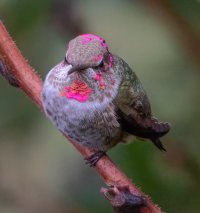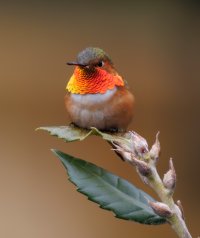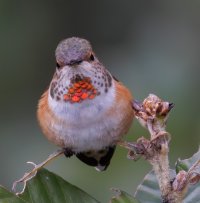Nice shots. Judging by the species, it looks like you spent some time in South America. We have between 50 and 100 Anna's Hummingbirds that live in our back yard almost year round. They stay all winter and then often a lot of them disappear for a month or so in the early spring, but they come back in full force for the summer and fall. During the summer, we also see quite a few Rufus, which are noted for being bossy, but they don't seem to get away with that behavior around our resident Anna's. In the middle of winter, they chow down about a gallon of sugar water a day. We are in the woods and there are lots of different kinds of spiders around, so I suspect that is another reason the Hummers like it here (beyond the ever-replenishing flowersVery nice detail. I have shot a few in my time but with the 5DIV + 100-400mm II, about a third of the resolving power of your 800mm on the R7.View attachment 213028View attachment 213029View attachment 213030View attachment 213031View attachment 213032View attachment 213033View attachment 213034View attachment 213035

Last edited:
Upvote
0




